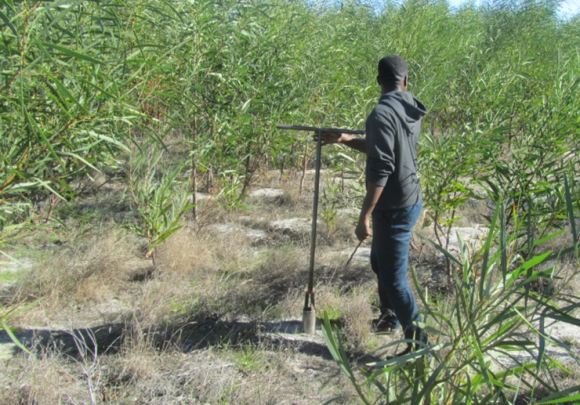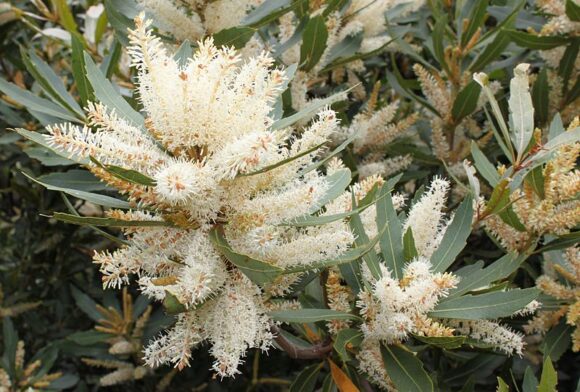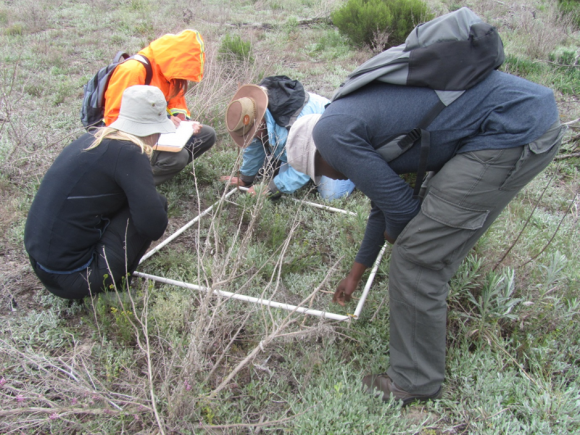8 February 2021 | By Jan-Hendrik Keet
Microbial communities of fynbos soils have not received as much attention as its aboveground components. This is especially true regarding the impacts of invasive plants on these communities. However, this has recently been explored in a study by Dr Jan-Hendrik Keet (C·I·B postdoc) and Prof Allan Ellis (Botany & Zoology), Prof Cang Hui (C·I·B Core Team Member), Dr Ana Novoa (Czech Academy of Sciences, Czech Republic), and Prof Jaco Le Roux (C·I·B Associate).
Proper ecosystem functioning depends on the activities of soil microbes, such as bacteria and fungi, and is affected by the local plant communities. These tiny organisms have important roles, for example regulating nutrients in the soil by secreting extracellular enzymes. This, in turn, affects the plant communities that grow in these soils, thus creating plant-microbe feedback loops. As such, dense stands of invasive plants (like Australian acacias) are not only expected to change the chemistry of the soil, but also potentially the make-up and functions of soil microbial communities.
To investigate the impacts of invasive acacias on fynbos soil bacterial communities and their functioning, the research team sampled five sites in the Cape Floristic Region (one near Somerset West, three near Stanford, and one near Vermaaklikheid on the Agulhas Plain) that capture a large degree of variation in fynbos soils.

The study showed that acacias change the soil chemistry by increasing the levels of nitrogen-containing compounds, carbon and pH of the soil. Acacias also change the make-up of bacterial communities in the soil, but not the diversity. Finally, the research team discovered that acacias elevate soil phosphatase and urease activity, enzymes that regulate the release of phosphorous and nitrogen, respectively, from organic matter in the soil.
Interestingly, changes in both the chemical properties of the soil and its bacterial community composition under acacia invasion correlated with phosphatase activity. This means that not only do acacias alter soil chemistry and bacterial communities, they also alter soil functionality. But, as is often the case ecosystem interactions, these impacts appear to be specific to local site conditions, and as such the plant-soil feedbacks underlying these impacts remain unclear.
“This study provides valuable information on how an essential, but often neglected, component of ecosystems is affected by invasive plants, namely soil microbial communities,” says Dr Keet, lead author of the paper published in Microbial Ecology.
He added that “invasive plants change soil chemistry and the composition of soil microbial communities, and that in turn correlates with elevated soil enzyme activities. The question is now: how long do these changes persist after the invasive plants are removed, and how do such changes impact the re-establishment of native plants, for example during restoration attempts?”
Read the full paper
Keet JH, Ellis AG, Hui C, Novoa A, & Le Roux JJ (2021) Impacts of invasive Australian acacias on soil bacterial community composition, microbial enzymatic activities, and nutrient availability in fynbos soils, Microbial Ecology: https://doi.org/10.1007/s00248-021-01683-1
For more information, contact Jan-Hendrik Keet at jhkeet@hotmail.com



